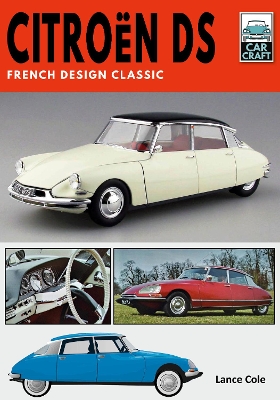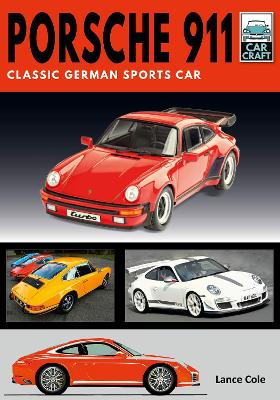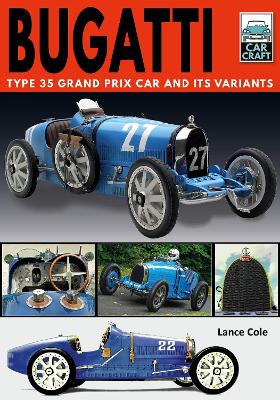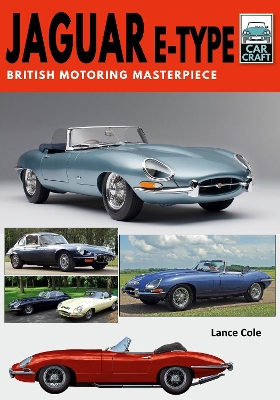Car Craft
6 total works
Launched in 1955 yet looking like a sci-fi design proposal for a future then undreamed of, Flaminio Bertoni's ellipsoid sculpture with wheels that was the Citroen DS stunned the world.
There was a near riot at the 1955 Paris Motor Show launch of the car, orders flooded in for this, the new 'big Citroen' (a Voiture a Grande Diffusion or VGD) as the car that replaced the legendary Traction Avant range.
The term 'DS' stems from two Citroen parts of nomenclature - the type of engine used as the 11D, (D) and the special hemispherical design of the cylinder head as 'Culasse Special' (S): DS out of 'Deesse' or Goddess, was a more popular myth of ' DS' origination, but an erroneous one.
But it was not just the car's aerodynamically advanced body shape (Cd. 0.37) that framed the genius of the DS: hydro pneumatic self-levelling suspension, advanced plastics and synthetics for the construction of the roof and dashboard/fascia, and amazing road holding and cabin comfort were some of this car's highlights.
Only the lack of an advanced new engine was deemed a missed opportunity. In fact Citroen had created a new engine for the car but lacked the resources to produce it in time for 1955.
DS was a major moment in the history of car design, one so advanced that it would take other auto manufacturers years to embrace. Yet DS in its 'aero' design was the precursor to today's low drag cars of curved form.
Manufactured worldwide, used by presidents, leaders, diplomats, farmers and many types of people, the DS redefined Citroen, its engineering and design language, and its brand, for decades to come.
Prone to rust, not the safest car in the world, and always lacking a smoother powerplant, the DS still became an icon of car design.
Reshaped with a new nose and faired-in headlamps in 1967, DS remained in production until 1975.
Across its life DS spawned an estate car variant as the 'Safari', a range of limousines, two-door convertibles, and even coach-built coupes and rally specials.
This car was a product design that became an article of social science - it was that famous and it defined a European design movement upon a global stage then packed with 'me too' copyist designs.
The DS or 'Goddess' as it was tagged, was a tear-drop shaped act of French confidence in a world of the regurgitation of the known. Some argue that DS and its effect has never been surpassed.
This new value-for-money book provides innovative access to the design, history, and modelling of the revolutionary DS - one of the true 'greats' of motoring history and, a contemporary classic car of huge popularity.
There was a near riot at the 1955 Paris Motor Show launch of the car, orders flooded in for this, the new 'big Citroen' (a Voiture a Grande Diffusion or VGD) as the car that replaced the legendary Traction Avant range.
The term 'DS' stems from two Citroen parts of nomenclature - the type of engine used as the 11D, (D) and the special hemispherical design of the cylinder head as 'Culasse Special' (S): DS out of 'Deesse' or Goddess, was a more popular myth of ' DS' origination, but an erroneous one.
But it was not just the car's aerodynamically advanced body shape (Cd. 0.37) that framed the genius of the DS: hydro pneumatic self-levelling suspension, advanced plastics and synthetics for the construction of the roof and dashboard/fascia, and amazing road holding and cabin comfort were some of this car's highlights.
Only the lack of an advanced new engine was deemed a missed opportunity. In fact Citroen had created a new engine for the car but lacked the resources to produce it in time for 1955.
DS was a major moment in the history of car design, one so advanced that it would take other auto manufacturers years to embrace. Yet DS in its 'aero' design was the precursor to today's low drag cars of curved form.
Manufactured worldwide, used by presidents, leaders, diplomats, farmers and many types of people, the DS redefined Citroen, its engineering and design language, and its brand, for decades to come.
Prone to rust, not the safest car in the world, and always lacking a smoother powerplant, the DS still became an icon of car design.
Reshaped with a new nose and faired-in headlamps in 1967, DS remained in production until 1975.
Across its life DS spawned an estate car variant as the 'Safari', a range of limousines, two-door convertibles, and even coach-built coupes and rally specials.
This car was a product design that became an article of social science - it was that famous and it defined a European design movement upon a global stage then packed with 'me too' copyist designs.
The DS or 'Goddess' as it was tagged, was a tear-drop shaped act of French confidence in a world of the regurgitation of the known. Some argue that DS and its effect has never been surpassed.
This new value-for-money book provides innovative access to the design, history, and modelling of the revolutionary DS - one of the true 'greats' of motoring history and, a contemporary classic car of huge popularity.
The aim of this innovative series is to provide modelmakers and car enthusiasts with a new standard of primarily visual reference of both full-size cars and their scale models. Each book contains detailed technical information imparted through drawings and photographs while the meticulously researched full-colour profiles provides a complete reference for paint schemes and markings. In addition, every volume of the CarCraft series features summaries of design histories and operational careers, and reviews of available kits.
Recognised as one of the most important sports cars in the history of the automobile, Porsche's 911 represents a vital story in the annals of the design and driving of the motor car. This new book delivers an innovative format to the car enthusiast by covering the engineering, design, and modelling of Porsche's 911 series.
A true icon, 911 is the designer legend - and a driving tool par excellence: the 911 stemmed from the Porsche 356 yet created a new era and a new international definition of style amid a global motor sport record of success across race and rally events
Here in CarCraft title Number Two, experienced automotive writer, industrial designer and Porsche enthusiast Lance Cole pays tribute to the car in a detailed yet engaging commentary. New photography, the design story, and full coverage of the modelling options in synthetic materials and die cast metals, create a narrative of vital interest.
Recognised as one of the most important sports cars in the history of the automobile, Porsche's 911 represents a vital story in the annals of the design and driving of the motor car. This new book delivers an innovative format to the car enthusiast by covering the engineering, design, and modelling of Porsche's 911 series.
A true icon, 911 is the designer legend - and a driving tool par excellence: the 911 stemmed from the Porsche 356 yet created a new era and a new international definition of style amid a global motor sport record of success across race and rally events
Here in CarCraft title Number Two, experienced automotive writer, industrial designer and Porsche enthusiast Lance Cole pays tribute to the car in a detailed yet engaging commentary. New photography, the design story, and full coverage of the modelling options in synthetic materials and die cast metals, create a narrative of vital interest.
This new book, the first in the CarCraft series delivers an innovative presentation to the car enthusiast by covering the engineering, design, and modelling of one of motoring's greatest cars across all its epochs.
Ettore Bugatti changed engineering history with his genius and innovations. With its clever engine design, new suspension thinking, and distinct body style, Bugatti's T35 and its variants defined a new era of design and driving and must surely rank as true 'supercars'. A motor sport legend was also cast down by these Bugattis.
Experienced automotive writer, industrial designer and Bugatti Owners Club member Lance Cole pays tribute to the car in a detailed yet engaging commentary. New photography, the design story, and full coverage of the modelling options in synthetic materials and die cast metals, create a narrative of vital interest.
Ettore Bugatti changed engineering history with his genius and innovations. With its clever engine design, new suspension thinking, and distinct body style, Bugatti's T35 and its variants defined a new era of design and driving and must surely rank as true 'supercars'. A motor sport legend was also cast down by these Bugattis.
Experienced automotive writer, industrial designer and Bugatti Owners Club member Lance Cole pays tribute to the car in a detailed yet engaging commentary. New photography, the design story, and full coverage of the modelling options in synthetic materials and die cast metals, create a narrative of vital interest.
The aim of this innovative series is to provide modelmakers and car enthusiasts with a new standard of primarily visual reference of both full-size cars and their scale models. Each book contains detailed technical information imparted through drawings and photographs while the meticulously researched full-colour profiles provides a complete reference for paint schemes and markings. In addition, every volume of the CarCraft series features summaries of design histories and operational careers, and reviews of available kits.
The third book in the new CarCraft series, Jaguar E-Type, frames the legend of what many call the world's most beautiful car design. Sir William Lyons and Malcolm Sayer carved automotive history with this car across its 1960s-1970s incarnations from roadster to coup amid the fitting of Straight-Six, to V12 engines.
With its new definition of sculptural styling, performance, handling and innovative style, the E-Type or XKE series in the USA, created a car of global impact that remains a great classic of all time.
Here, experienced automotive writer, and industrial designer, Lance Cole pays tribute to the car in a detailed yet engaging commentary. New photography, the design story, and full coverage of the modelling options in synthetic materials and die cast metals, create a narrative of vital interest.
The third book in the new CarCraft series, Jaguar E-Type, frames the legend of what many call the world's most beautiful car design. Sir William Lyons and Malcolm Sayer carved automotive history with this car across its 1960s-1970s incarnations from roadster to coup amid the fitting of Straight-Six, to V12 engines.
With its new definition of sculptural styling, performance, handling and innovative style, the E-Type or XKE series in the USA, created a car of global impact that remains a great classic of all time.
Here, experienced automotive writer, and industrial designer, Lance Cole pays tribute to the car in a detailed yet engaging commentary. New photography, the design story, and full coverage of the modelling options in synthetic materials and die cast metals, create a narrative of vital interest.




